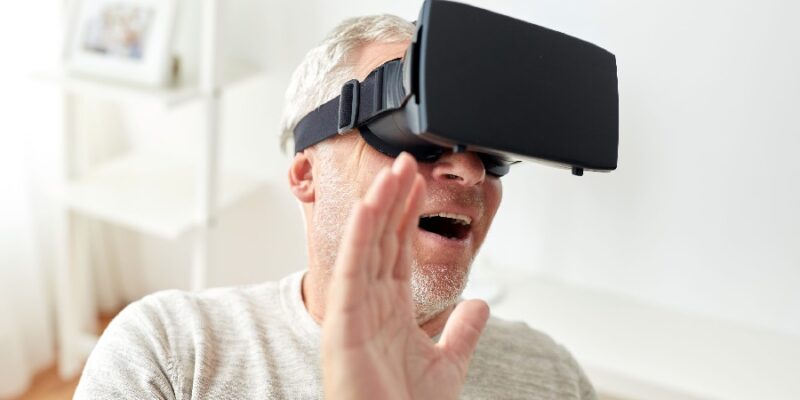Although virtual reality may sound like science fiction, it is currently available technology. Virtual reality has numerous valuable applications in the healthcare field and is utilized for entertainment. Patients can employ In-home therapeutic Virtual Reality to manage their physical and mental health conditions. A doctor or therapist will often supervise the beginning of VR treatment. Here are just a few advantages of at-home virtual reality therapy.
VR can be applied as a transitional phase in exposure therapy.
High anxiety and phobia levels might make it challenging for some people to work or carry out daily duties like supermarket shopping. When left untreated, anxiety can develop into agoraphobia, making it difficult for a person to leave their house. The safe and efficient method of treating phobias and anxiety is exposure therapy. In a secure and controlled setting, patients undergoing this treatment are gradually exposed to the things they are afraid of. VR therapy allows patients to digitally experience unpleasant circumstances while remaining safe, serving as a middle phase in exposure therapy.
Preferred by patients
According to scientific studies, utilizing traditional exposure approaches results in higher patient decreases. According to research by Garca-Palacios et al. (2007), 27% of his particular phobia patients rejected in vivo exposure therapy because they thought it was too rigorous. In comparison, only 3% of the trial participants opted out of VR exposure therapy. VR technology facilitates the conduct of therapy sessions and the creation of more favorable surroundings.
VR is useful as a meditation tool.
Mental health can benefit greatly from meditation. Meditation enables people to be present at the moment and can help to rid the mind of anxiety and depressive symptoms. For this reason, therapists start guiding their patients’ meditation practices. While participating in these guided meditation sessions, patients can use virtual reality (VR) technology to experience calming, immersive surroundings like tranquil forests and quiet waters.
It enables psychologists to increase exposure to situations that make people progressively anxious.
As was previously indicated, the psychologist has little influence over the level of anxiety-inducing exposure that the client experiences in traditional exposure treatment. They help and guide clients in ambiguous situations. The psychologist can introduce a fear element further to enhance the treatment process in an overly stimulating atmosphere if the client is prepared to deal with the feelings that the virtual reality environment they are first exposed to causes. Take away their dread and worry without overwhelming them.
Used to provide drug-free pain relief
Another powerful painkiller is virtual reality. All physical feelings, including pain, begin in the brain. Therefore, diverting the thoughts might ease uncomfortable feelings. VR treatment is an option for people who want to cut back on or stop taking painkillers. Virtual reality treatments can be utilized as frequently as necessary, unlike drugs, which must be taken regularly to prevent overdosing.
It can be done at home.
Finally, patients can treat their mental health problems and pain levels from the convenience of their homes thanks to In-home therapeutic Virtual Reality. Patients can use a particular application created for medical usage to execute a virtual reality program customized to their needs. Patients might use VR sessions to control their symptoms during appointments with doctors and therapists.
The client or psychologist may decide to stop the exposure at any time.
The client or psychologist can end the virtual reality exposure event at any time by simply taking off the virtual reality headset, unlike when the client is exposed to an anxiety-inducing actual or imagined setting. This VRAT function serves as a safeguard to stop clients from feeling overburdened and wishing to stop the therapy completely.








Comments